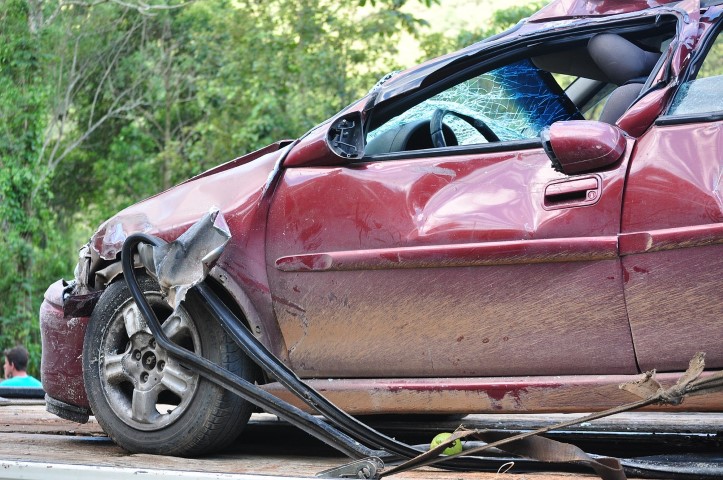 When you think of a rear-end collision, a minor fender bender often comes to mind. You know, the type of accident where both drivers inspect the vehicles’ bumpers and usually go on their way.
When you think of a rear-end collision, a minor fender bender often comes to mind. You know, the type of accident where both drivers inspect the vehicles’ bumpers and usually go on their way.
There may be a little frustration and even some cursing, but property damage and injuries are non-existent or minimal at the most. This is often the case, especially if the rear-end accident happens in a parking lot or backing out of a driveway. However, injuries in rear-end vehicle crashes can also be severe, along with property damage.
Common Injuries in Rear-End Collision
If you’re involved in a rear-end accident, hopefully, it’s a minor tap on your bumper. Everyone walks away without injuries or property damage. You may not even need to call the authorities to the accident scene.
In Texas, you have ten days to report an accident from the date it occurs. If there aren’t any injuries and property damage is under $1,000, you can legally skip contacting the police.
With that being said, not all rear-end accidents are gentle taps on your vehicle bumper; some can cause significant injuries. Here’s a look at some of the common injuries in rear-end car accidents.
Whiplash
Whiplash occurs when your neck moves suddenly and forcefully back and forth. Even though whiplash is often considered a minor injury, the effects can be long-lasting. From neck soreness to serious nerve damage, the pain and discomfort can last for weeks and even months.
Back Strains
Back strains aren’t something you only get by lifting heavy objects, your rear-end collision can also cause a painful injury. A strain happens when a muscle or tendon in your back is torn, twisted, or pulled.
Even a low-speed rear-end car accident can result in back strain. If your back muscles are cramping or you have a decreased range of motion, it’s a good idea to make an appointment with your physician.
Some back strain injuries go away on their own, while others require medical treatment. You may need to spend some time with a chiropractor or, at the least, a professional massage therapist. If you’re having difficulty walking, your strain may actually be a muscle sprain. The two injuries are similar, except a sprain often limits your ability to easily move around.
Herniated or Slipped Disc
The rubbery cushions in your spine between the bones are your discs. If the disc is torn or falls out of place, it’s considered herniated or slipped. You may not even know you have a herniated disc. Sometimes, there aren’t any noticeable symptoms. But if you have pain or numbness in your arms or legs, it can indicate a slipped or herniated disc.
Most of the time, the issue can be resolved with exercise and other types of non-invasive therapy. Although occasionally surgery is required.
Spinal Stenosis
Since the signs and symptoms are similar, you may confuse spinal stenosis with a herniated or slipped disc. Like a herniated disc, you may not even know you have the medical condition. This is a reason why you should always seek medical attention after any type of vehicle accident, even if it’s only a minor rear-end collision.
Without medical attention, the injury can worsen, leading to more expensive and invasive procedures.
Spinal Fractures
Just the thought of a spinal fracture is frightening. Suddenly, you’re thinking about potential paralysis. However, most spinal fractures from rear-end collisions, even ones occurring at a higher rate of speed, typically don’t result in paralysis.
You may experience sudden and intense back pain, have trouble walking, and even notice a reduced range of movement. While these symptoms are serious, treatment usually is non-invasive. A back brace is commonly used to stabilize your spine during the healing process.
Compression Fracture
The symptoms of a compression fracture are similar to a spinal fracture; the primary difference is the long-term effects if you don’t receive medical treatment. In other words, don’t ignore any aches or tinges in your back after a rear-end collision. Always seek immediate medical attention.
Ignoring a compression fracture can lead to a disability or deformity, and you may even notice you’re a little shorter than you were before the accident. Don’t worry; you won’t lose inches off your height, but you can drop down a couple of centimeters.
Don’t Ignore Your Injuries from a Rear-End Collision
While a rear-end collision might seem minor, often resulting in limited damage and apparent injuries, scheduling a check-up with a physician is crucial toward properly healing. Taking this precaution is important because some injuries, such as a compression fracture or whiplash, might not be immediately obvious.
Early detection and treatment of these conditions can prevent further complications and ensure proper healing. Stay tuned to our News section of Gauge Magazine for all your Automotive news.










